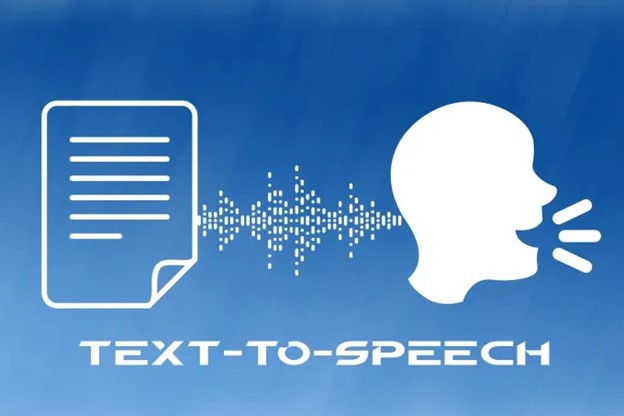Neural vs Traditional TTS: What’s the Difference and Why It Matters

Text-to-speech (TTS) technology converts written text into human-like speech. As TTS continues advancing, there are now two main types: traditional TTS and neural TTS.
Understanding the key differences between these two TTS approaches is important for properly leveraging them based on use case needs. This article provides an overview of traditional and neural TTS, compares their core characteristics, and discusses their respective strengths and limitations.
As TTS becomes an increasingly crucial accessibility tool and part of human-computer interaction, choosing the optimal technology type is key.
Overview of Traditional TTS
Traditional TTS uses a concatenative or parametric approach to synthesize speech. Here, pre-recorded human voice samples are strung together or parameters like pitch, timing, and volume are modified.
The main steps involve text analysis, processing rules, then audio generation. First, the input text is normalized to expand numbers and abbreviations. Next, the phonetic transcription and prosody are predicted to plan timing, pitch, etc. Finally, the output speech is constructed using pre recorded samples or an acoustic model.
Key features of traditional TTS include high intelligibility, small system footprint, and predictable structure. These systems are lightweight and stable enough for integrating into contact centers, in-car navigation systems, and more. However, the output speech can sound choppy or robotic.
Overview of Neural TTS
Neural TTS takes advantage of deep learning models like RNNs, CNNs, and transformers. These systems directly generate raw audio Waveforms from text in an end-to-end fashion.
First, the model ingests text which gets encoded into vector representations. This text encoding captures linguistic patterns. The model then predicts audio features which get decoded into a speech waveform using signal processing. The deep neural architecture enables modeling complex dependencies between text and corresponding acoustic properties.
Neural TTS produces significantly more natural-sounding and expressive speech closer to human voices. The models can also efficiently adapt voices on-the-fly using small data samples. However, neural TTS demands more computational resources for training and inference.
Most popular AI tools like Minimax now use neural TTS technology to generate lifelike, natural-sounding speech. This advancement has significantly improved the realism and emotional expression in synthesized voices, making these text to speech tools ideal for applications in virtual assistants, audiobooks, customer service bots, and accessibility tools.

Key Differences Between Neural and Traditional TTS
Now that you have the basic understanding of neural and traditional TTS, let’s explore tangible impacts around output quality, flexibility, speed and infrastructure by comparing the two technologies:
Voice Realism
Neural networks enable impressively human-like vocal results and emotional expression thanks to modeling genuine speech data through machine learning. This exceeds the rigid rules limitations of traditional TTS.
Customizability
The latest neural TTS technologies allow easier voice customization for desired accents, cadences etc based on supplying tailored training data. Traditional configuration proves more convoluted.
Performance Tradeoffs
Traditional TTS offers faster outputs but sounds synthetic. Neural TTS trades slower generation times for enhanced realism given its data-intensive prediction complexity.
Infrastructure Needs
Neural TTS relies on heavy duty GPU computing for model development/inferencing. On the other hand, traditional TTS deploys simpler across low-powered devices easily.
Advantages of Neural TTS
- Enhanced Vocals – Lifelike vocal results heighten customer perceptions and emotional connections without distracting robotic awkwardness. Critical for public-facing use cases.
- Accent/Language Support – Modeling different languages and accents expands global communication reach and inclusion. Challenging for rules-based traditional TTS.
- Future-Proofing – Continuous AI advancements will further improve neural speech synthesis aligned to human norms. Solves legacy TTS sound barriers.
Limitations of Neural TTS
However, neural TTS still bears challenges around:
- Computational Intensiveness – GPU/memory access needs limit embedded system integration opportunities where resources slim.
- Data Dependency – Model accuracy relies heavily on volume & quality of training data dictate. Gathering sufficient datasets proves challenging.
- Early Stage Maturity – Despite hype, still trails traditional TTS depth in niche use case optimizations. Rapidly closing the gap.
Advantages of Traditional TTS
In contrast, sticking with traditional TTS workflow models proves advantageous through:
- Familiar Reliability – Industry comfortable with intricacies of mature rules-based TTS pipeline functioning predictably at scale.
- Cross-Platform Deployment – Low compute requirements integrate equally performing on servers, apps across device types. Maximizes reach.
- Cost Effectiveness – Avoid expensive machine learning infrastructure needed for neural TTS, minimizing budgets.
Limitations of Traditional TTS
Yet core traditional TTS shortcomings center on:
- Synthetic Voice Quality – Robotically stiff verbosity remains jarring for modern users expecting organic conversational tone.
- Limited Customization – Constraining standard category options exist without ability to model unique new personalities well.
- No Future-Proof Evolution – Unlike AI-based solutions, minimal flexibility improves core synthesis process over time as user expectations rise.
Conclusion
Neural TTS uses deep learning to deliver significantly more human-like speech with greater flexibility. But this high accuracy demands heavier computation and data dependence. Meanwhile, traditional TTS offers simplicity and hardware efficiency at the cost of less realistic voices and limited language support.
When choosing between neural versus traditional TTS, key considerations include use case data variability, audio expressiveness needs, infrastructure capabilities, and language diversity requirements. As neural TTS matures to address current barriers in robustness, accessibility, and deployment ease, adoption will accelerate to unlock more human-centered synthetic voices.



